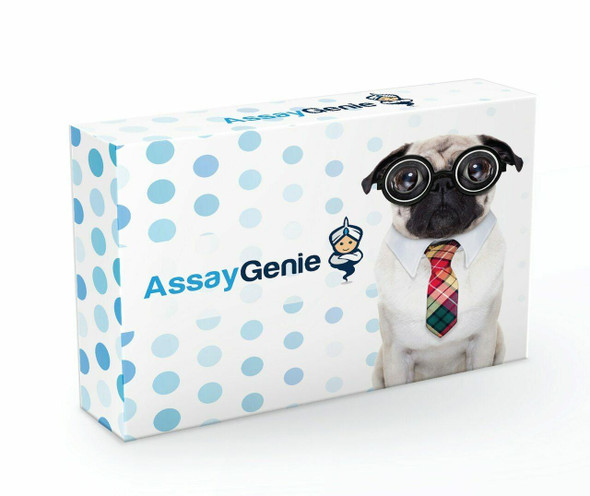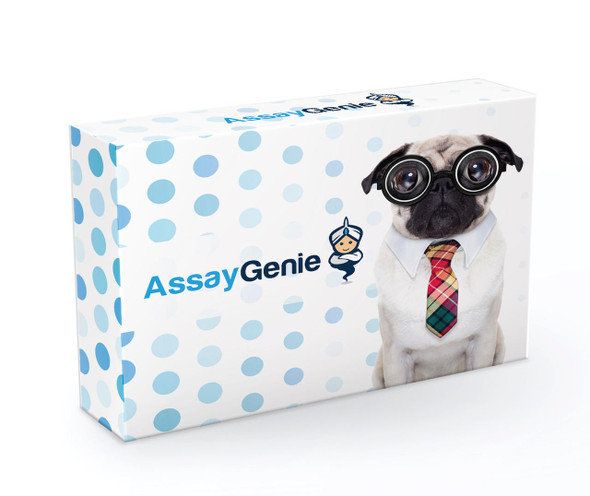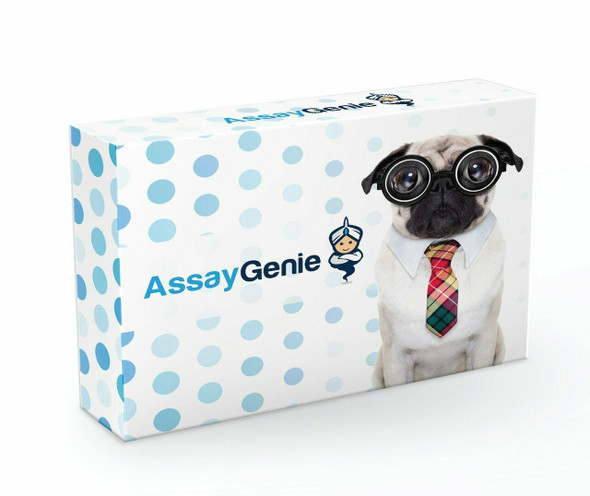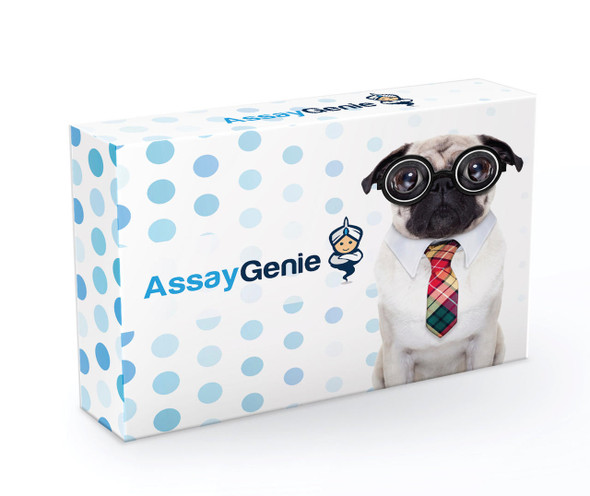Description
Human ECHO-IgM (Enteric Cytopathic Human Orphan virus-Immunoglobulin M) ELISA Kit (HUFI04723)
The Human Orphan Virus Immunoglobulin M (IgM) ELISA Kit is a specialized assay designed for the precise detection of IgM antibodies against the Enteric Cytopathic Human Orphan Virus in human serum samples. This kit provides a high level of sensitivity and specificity, ensuring accurate and reproducible results for research purposes.The Enteric Cytopathic Human Orphan Virus is a rare and understudied virus that can cause severe gastrointestinal symptoms in infected individuals.
Detection of IgM antibodies against this virus can be crucial for early diagnosis and monitoring of infections, making this ELISA kit an invaluable tool for researchers and healthcare providers.By using this kit, researchers can gain valuable insights into the prevalence and pathogenesis of Enteric Cytopathic Human Orphan Virus infections, leading to a better understanding of this virus and potential development of diagnostic and therapeutic strategies.
| Product Name: | Human ECHO-IgM (Enteric Cytopathic Human Orphan virus-Immunoglobulin M) ELISA Kit |
| Product Code: | HUFI04723 |
| Size: | 96 Assays |
| Alias: | ECHO-IgM ELISA Kit |
| Detection method: | Trapping ELISA |
| Application: | This immunoassay kit allows for the in vitro quantitative determination of Human ECHO-IgM (Enteric Cytopathic Human Orphan virus-Immunoglobulin M) concentrations in serum plasma and other biological fluids. |
| Sensitivity: | Qualitative |
| Range: | Qualitative |
| Storage: | 4°C for 6 months |
| Note: | For Research Use Only |
| Recovery: | Matrices listed below were spiked with certain level of Human ECHO-IgM (Enteric Cytopathic Human Orphan virus-Immunoglobulin M) and the recovery rates were calculated by comparing the measured value to the expected amount of Human ECHO-IgM (Enteric Cytopathic Human Orphan virus-Immunoglobulin M) in samples. Enquire for more information. |
| Linearity: | The linearity of the kit was assayed by testing samples spiked with appropriate concentration of Human ECHO-IgM (Enteric Cytopathic Human Orphan virus-Immunoglobulin M) and their serial dilutions. The results were demonstrated by the percentage of calculated concentration to the expected. Enquire for more information. |
| CV(%): | Intra-Assay: CV<8% Inter-Assay: CV<10% |
| Component | Quantity | Storage |
| ELISA Microplate(Dismountable) | 8×12 strips | 2-8°C |
| Negative Control | 1 vial | 2-8°C/-20°C |
| Positive Control | 1 vial | 2-8°C |
| Sample Dilution Buffer | 12ml | 4°C (Protect from light) |
| Human ECHO-IgM (Enteric Cytopathic Human Orphan virus-Immunoglobulin M) antigen | 6ml | 2-8°C |
| HRP-Conjugate | 12ml | 2-8°C |
| TMB Substrate A | 6ml | 2-8°C |
| TMB Substrate B | 6ml | 2-8°C (Protect from Light) |
| Stop solution | 6ml | - |
| Wash Buffer (20X) | 25ml | - |
Other materials and equipment required:
- Microplate reader with 450 nm wavelength filter
- Multichannel Pipette, Pipette, microcentrifuge tubes and disposable pipette tips
- Incubator
- Deionized or distilled water
- Absorbent paper
- Buffer resevoir
*Note: Protocols are specific to each batch/lot. For the correct instructions please follow the protocol included in your kit.
| Step | Protocol |
| 1. | Label the sample wells, 1-3 Negative Controls, 1-2 Positive Controls and 1 blank wells. |
| 2. | Add 100uL Negative Controls and Positive Controls to each wells. |
| 3. | Add 100uL sample dilution buffer to sample wells and then add 10uL sample serum or plasma. Gently tap the plate to ensure thorough mixing. Seal the plate with a cover and incubate at 37°C for 60 min. |
| 4. | Remove the cover, and wash plate 5 times with Wash buffer and let the wash buffer stay in the wells for 1- 2 minute each time. |
| 5. | Add 50 uL Human ECHO-IgM (Enteric Cytopathic Human Orphan virus-Immunoglobulin M)-antigen to each well and gently tap the plate to ensure thorough mixing. Then add 50 µL HRP- Conjugates to each well, except blank well. |
| 6. | Seal the plate with a cover and incubate at 37°C for 30 min. |
| 7. | Remove the cover, and wash plate 5 times with Wash buffer and let the wash buffer stay in the wells for 1- 2 minute each time. |
| 8. | Add 50 ul of TMB substrate A and 50 ul of TMB substrate B into each well. Gently tap the plate to ensure thorough mixing. Cover the plate and incubate at 37°C in dark within 15 min. And the shades of blue can be seen in the Positive Controls. Negative Controls wells show no obvious color. |
| 9. | Add 50 ul of Stop solution into each well and mix thoroughly. The color changes into yellow immediately. |
| 10. | Read the O.D. absorbance at 450 nm in a microplate reader immediately after adding the stop solution. (Use the blank well to set zero) |
When carrying out an ELISA assay it is important to prepare your samples in order to achieve the best possible results. Below we have a list of procedures for the preparation of samples for different sample types.
| Sample Type | Protocol |
| Serum | If using serum separator tubes, allow samples to clot for 30 minutes at room temperature. Centrifuge for 10 minutes at 1,000x g. Collect the serum fraction and assay promptly or aliquot and store the samples at -80°C. Avoid multiple freeze-thaw cycles. If serum separator tubes are not being used, allow samples to clot overnight at 2-8°C. Centrifuge for 10 minutes at 1,000x g. Remove serum and assay promptly or aliquot and store the samples at -80°C. Avoid multiple freeze-thaw cycles. |
| Plasma | Collect plasma using EDTA or heparin as an anticoagulant. Centrifuge samples at 4°C for 15 mins at 1000 × g within 30 mins of collection. Collect the plasma fraction and assay promptly or aliquot and store the samples at -80°C. Avoid multiple freeze-thaw cycles. Note: Over haemolysed samples are not suitable for use with this kit. |
| Urine & Cerebrospinal Fluid | Collect the urine (mid-stream) in a sterile container, centrifuge for 20 mins at 2000-3000 rpm. Remove supernatant and assay immediately. If any precipitation is detected, repeat the centrifugation step. A similar protocol can be used for cerebrospinal fluid. |
| Cell culture supernatant | Collect the cell culture media by pipette, followed by centrifugation at 4°C for 20 mins at 1500 rpm. Collect the clear supernatant and assay immediately. |
| Cell lysates | Solubilize cells in lysis buffer and allow to sit on ice for 30 minutes. Centrifuge tubes at 14,000 x g for 5 minutes to remove insoluble material. Aliquot the supernatant into a new tube and discard the remaining whole cell extract. Quantify total protein concentration using a total protein assay. Assay immediately or aliquot and store at ≤ -20 °C. |
| Tissue homogenates | The preparation of tissue homogenates will vary depending upon tissue type. Rinse tissue with 1X PBS to remove excess blood & homogenize in 20ml of 1X PBS (including protease inhibitors) and store overnight at ≤ -20°C. Two freeze-thaw cycles are required to break the cell membranes. To further disrupt the cell membranes you can sonicate the samples. Centrifuge homogenates for 5 mins at 5000xg. Remove the supernatant and assay immediately or aliquot and store at -20°C or -80°C. |
| Tissue lysates | Rinse tissue with PBS, cut into 1-2 mm pieces, and homogenize with a tissue homogenizer in PBS. Add an equal volume of RIPA buffer containing protease inhibitors and lyse tissues at room temperature for 30 minutes with gentle agitation. Centrifuge to remove debris. Quantify total protein concentration using a total protein assay. Assay immediately or aliquot and store at ≤ -20 °C. |
| Breast Milk | Collect milk samples and centrifuge at 10,000 x g for 60 min at 4°C. Aliquot the supernatant and assay. For long term use, store samples at -80°C. Minimize freeze/thaw cycles. |











